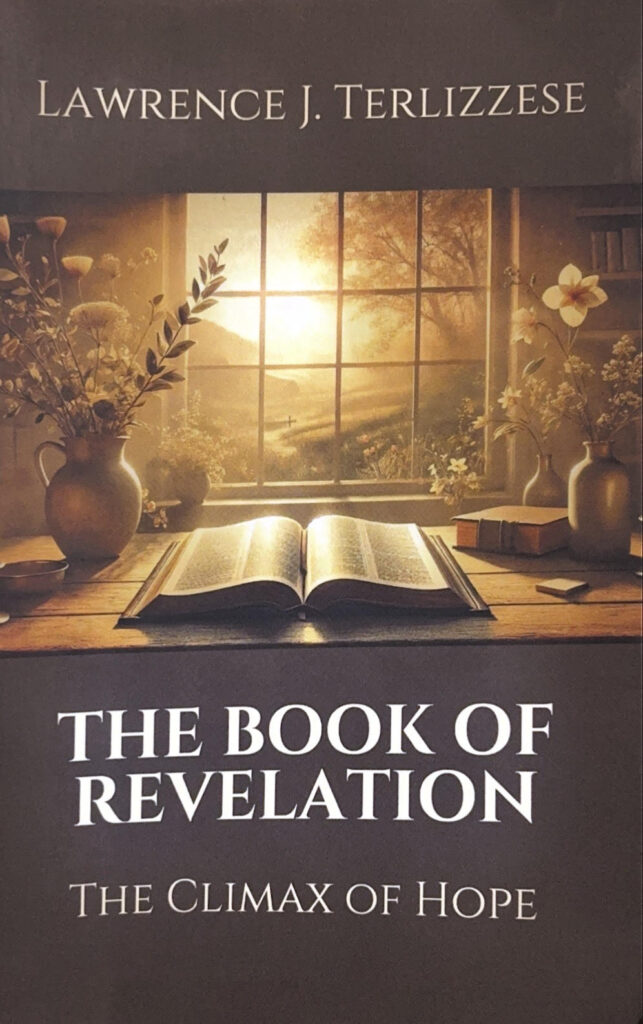
Then he showed me a river of living water, clear as crystal, flowing out of the throne of God and the Lamb. 2In the middle of the city’s main street on each side of the river was the tree of life producing twelve kinds of fruit, yielding its fruit every month. And the leaves of the tree were for the healing of the nations. 3There will no longer be any curse, but the throne of God and of the Lamb will be in it and his servants will worship Him. 4They will see His face and His name will be on their foreheads. 5And there will be no night and they have no need of the light of a lamp or the light of the Sun, because the Lord God will enlighten them and they will reign forever and ever (Revelation 22:1-5)
These first five verses of chapter 22 properly belong at the end of chapter 21. They describe the rebirth of the Garden of Eden in the midst of the New Jerusalem. This appears to be proof positive that the new creation will be the recapitulation of the old by a removal of the obstruction of sin. Chapter 21 spends a great deal of time describing the outside of the city, now we get a look inside. The language of life giving water and leaves of healing is appropriated from Ezekiel 47:1-12. John here applies it to the reconstituted Garden in the middle of New Jerusalem. We can easily find a parallel passage in John 4:14 where Jesus speaks to the woman at the well of the water of eternal life given to those who believe in Him. The water of life represents the Holy Spirit. Moderns can scarcely take in the depth of this analogy of water to life considering that every household has ready supply in whatever amount needed at any time. Fresh water was scarce in the ancient Near East so the image of a continual stream of water would have resonated at a deeper level.
The tree of life produces twelve different kinds of fruit each month. We have no correspondence of this description in modern horticulture. We must conclude then that the writer is talking about the great abundance and readily accessible sources of life in the Garden. The author speaks in chronological time because he accommodates human temporal understanding to divine revelation. The leaves of the tree are for the healing of the nations. We must not get the wrong impression that there will be sickness in the New Jerusalem and therefore the necessity of medicinal cures, rather the emphasis is the healing of the nations, which means universal salvation has come to all peoples and is no longer the strict province of the Jews. Also it speaks to the healing of the ravages of the wild beast’s effects on the nations of the world.
A river clear as crystal flows out of the throne. Note here that only one throne exists that of God and the Lamb. These two persons of the Godhead are equated with each other in power, glory and eternity throughout the text. We see an excellent example of the diversity of God in the unity of one existence, light from light, true God from true God, begotten not made consubstantial with the Father, multiplicity in harmony with itself, like a family of persons. The tree of life grows in the middle of Main Street with the river of living water flowing on each side. Here we see the fulfillment of the promise Jesus gives to the Ephesians that the victors will eat from the tree of life in the garden of God (2:7). The tree produces twelve different kinds of fruit each month; its leaves have medicinal properties for the benefit of the nations. The curse of sin is wiped out. The climax of hope will be reached when God’s children see His face with a new name written on their foreheads, a claim of ownership (2:17; 3:12; 7:3; 14:1). They will at last behold the beatific vision the end goal of human destiny. Adam hid himself from the face of God. Now in the New Eden God shows Himself to all. “Blessed are the pure in heart, for they will see God” (Matthew 5:8); “the upright shall behold his face” (Psalm 11:7); “For now we see in a mirror dimly, but then we will see face to face” (1 Corinthians 13:12). We will see God face to face as the apostle John promised elsewhere, “we will see him as he is” (1 John 3:2).
In response to the Jews questioning Jesus about whether He was the Messiah or not Jesus told them, “The Father and I are one” (John 10:30). Jesus says also, “Not that anyone has seen the Father except the one who is from God; he has seen the Father” (John 6:46). Philip asks Jesus to show them the Father to which he answered, “Whoever has seen me has seen the Father” (14:9). To look upon the Lamb and God will be to see God in His divinity and humanity. We are told throughout scripture no one can see God and live. Moses saw only the backside of God (Exodus 33:20-23; cf. John 1:18; 1 Timothy 6:16). In the new age we will behold the majesty of God and so shall we ever be with Him. Night disappears along with every other source of light. God will enlighten them and they will reign forever. Now we walk by faith and not by sight but in the end God will honor our faith as it gives way to sight and we will see God and live with Him forever. The faith of the martyrs will be rewarded at last. So God will be All in All. We have reached the crescendo of the book.
